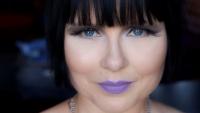
My speech therapy through the decades
Roger Simmonds shares memories from his speech therapy over the years - the helpful and the not so helpful.
The Internet has made the marketing of 'cures for all ills' all too easy. How can a person who stammers judge the effectiveness of the many speech therapies now available? Where's the data? Have there been any clinical trials, as there has to be for medicines? How can you steer clear of 'therapies' which are at best ineffective and at worst toxic?
Sharing experiences, good, bad and ugly, on social media is OK up to a point, and a lot better than having to endure, in isolation, the primitive 'cures' on offer in the 1950s and 1960s. But the plural of 'anecdote' is not 'data'!
That said, I hope sharing three memories (two of which I wish I could forget!) of my therapy experiences from the late 1950s onwards might be helpful to you.
Memory 1
This must have been in the late 1960s when, as a teenager, I was at my most vulnerable. I’m sitting opposite a therapist in a quiet but oppressive room. My tongue may, or may not, be sticking out with all the effort. I am embarrassed, uncomfortable and tongue-tied. So is the therapist - apart from the tongue sticking out bit. The silence is eventually broken: "If you had a physical disability I'd feel sorry for you,” they say “You haven't done the exercises I gave you properly. Churchill had a stammer but it didn't stop him." My self-esteem plummets to near absolute zero.
Sessions were usually terminated with the inevitable sentence of doom: "You're not trying." Which I'm sure I was.
The sort of therapy I am undergoing here could be called 'prescriptive'. The emphasis was on a particular technique that would help get the words out. If you still couldn't, it was your fault. Controlling breathing, which included humming before words, bouncing through a sentence in a lilting 'sing-song’ way or using a metronome (one word per beat) were popular.
Singing was also thought to be useful, and singing teachers were often let loose on children who stammered. A feature of these therapies was the 'one size fits all' mindset. Sessions were usually terminated with the inevitable sentence of doom: "You're not trying." Which I'm sure I was.
Memory 2
It is now the mid-1970s; I'm a little older, though not much wiser about speech therapy. I’m in a medical laboratory connected to a large whirring machine and wearing headphones. The technician is adjusting the volume and delay of an early auditory feedback machine called Hector. I begin to talk. Marvellous! Where did this Niagara of words come from? "There, you see, you can do it," I was told. End of session. I leave elated, which lasts just as long as realising I'm hopelessly lost, as I try to ask a stranger for help. She thinks I'm drunk.
These sorts of therapy could be classified as 'pseudo-medical' and were popular in the 70s, when both psychology and electronics had improved. The methodologies could be alarming; aversion therapy involved electric shocks whilst delayed auditory feedback enabled the psychiatrist to explore personal memories - they all too often believed that stammering behaviour was a form of self-punishment and the result of a long-suppressed trauma. Unfortunately, none of this worked in the long term and if you weren't traumatised beforehand, you could well be afterwards!
Memory 3
Fortunately, things got a lot better in the early 1980s. I'm in a large room, sitting with a therapist. We’re watching a 10-minute video of me trying to say, "Hello, I'm Roger and I am a person who stammers." My speech patterns and physical contortions are identified and analysed. I’ve signed up for a four-week intensive course. Will it all be like this?
In my opinion the best therapies will offer techniques to aid fluency, but the emphasis will be on easy two-way communication.
This was the beginning of what could be called 'person-centred' therapy. First introduced in the 1970s, these 'holistic' methods included an element of cognitive psychotherapy. Whether one-to-one or in a group, you would be invited to drop your guard in a safe, non-threatening environment. You might begin to feel - probably for the first time in your life - accepted as the real person you thought yourself to be. This could be as alarming, and as scary, as any pseudo-medical procedure!
Which would I recommend?
Nevertheless, these sorts of therapies are the only ones I’d personally recommend. Any therapies that could be classified as largely prescriptive or pseudo-medical should be avoided in my opinion. The best therapies will of course offer techniques to aid fluency, but the emphasis will be on easy two-way communication. Importantly, feelings and unhelpful behaviours associated with speech are addressed in an understanding and sympathetic way.
There may not be objective clinical data to support the superiority of these sorts of speech therapy but over the years I have met many people who, having 'stayed the course', perhaps over a number of years, are now well-rounded individuals; relaxed, and fun to be with. They may be more 'fluent', or 'happy stammerers'. It's their choice. Some have become therapists, psychologists or even, against all expectations, counsellors. I know, I speak from experience, and have the data... er... anecdotes to prove it!
To find out what modern speech and language therapy approaches are like, and what the options are, see One-to-one Adult Speech & Language Therapy and Adult Stammering Courses.
Would you like to write an article about anything stammering-related? See Submit Something For The Site or email editor@stamma.org.

































